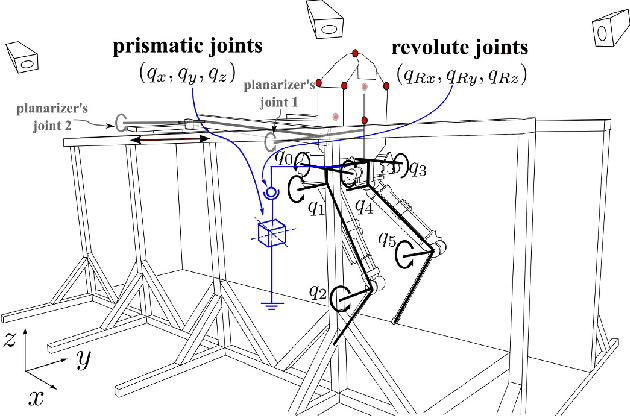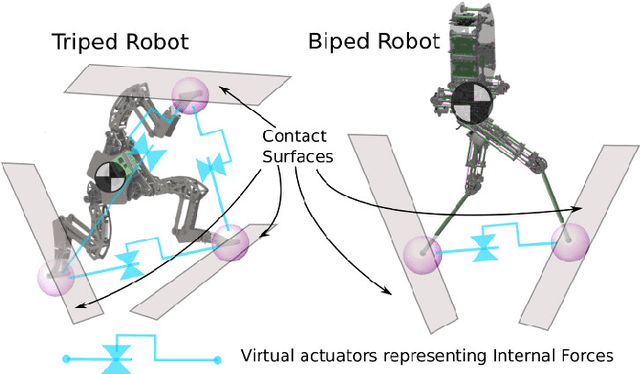Gray Thomas
Enhancing Voluntary Motion with Modular, Backdrivable, Powered Hip and Knee Orthoses
Oct 04, 2021



Abstract:Mobility disabilities are prominent in society with wide-ranging detriments to affected individuals. Addressing the specific deficits of individuals within this heterogeneous population requires modular, partial-assist, lower-limb exoskeletons. This paper introduces the Modular Backdrivable Lower-limb Unloading Exoskeleton (M-BLUE), which implements high torque, low mechanical impedance actuators on commercial orthoses with sheet metal modifications to produce a variety of hip- and/or knee-assisting configurations. Benchtop system identification verifies the desirable backdrive properties of the actuator, and allows for torque prediction within 0.4 Nm. An able-bodied human subject experiment demonstrates that three unilateral configurations of M-BLUE (hip only, knee only, and hip-knee) with a simple gravity compensation controller can reduce muscle EMG readings in a lifting and lowering task relative to the bare condition. Reductions in mean muscular effort and peak muscle activation were seen across the primary squat musculature (excluding biceps femoris), demonstrating the potential to reduce fatigue leading to poor lifting posture. These promising results motivate applications of M-BLUE to additional subject populations such as hip/knee osteoarthritis and geriatric frailty, and the expansion of M-BLUE to bilateral and ankle configurations.
Assessing Whole-Body Operational Space Control in a Point-Foot Series Elastic Biped: Balance on Split Terrain and Undirected Walking
Jan 13, 2015



Abstract:In this paper we present advancements in control and trajectory generation for agile behavior in bipedal robots. We demonstrate that Whole-Body Operational Space Control (WBOSC), developed a few years ago, is well suited for achieving two types of agile behaviors, namely, balancing on a high pitch split terrain and achieving undirected walking on flat terrain. The work presented here is the first implementation of WBOSC on a biped robot, and more specifically a biped robot with series elastic actuators. We present and analyze a new algorithm that dynamically balances point foot robots by choosing footstep placements. Dealing with the naturally unstable dynamics of these type of systems is a difficult problem that requires both the controller and the trajectory generation algorithm to operate quickly and efficiently. We put forth a comprehensive development and integration effort: the design and construction of the biped system and experimental infrastructure, a customization of WBOSC for the agile behaviors, and new trajectory generation algorithms. Using this custom built controller, we conduct, for first time, an experiment in which a biped robot balances in a high pitch split terrain, demonstrating our ability to precisely regulate internal forces using force sensing feedback techniques. Finally, we demonstrate the stabilizing capabilities of our online trajectory generation algorithm in the physics-based simulator and through physical experiments with a planarized locomotion setup.
 Add to Chrome
Add to Chrome Add to Firefox
Add to Firefox Add to Edge
Add to Edge